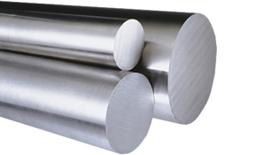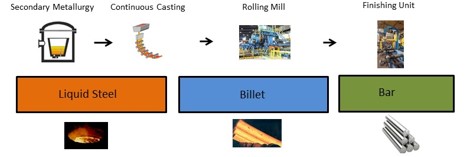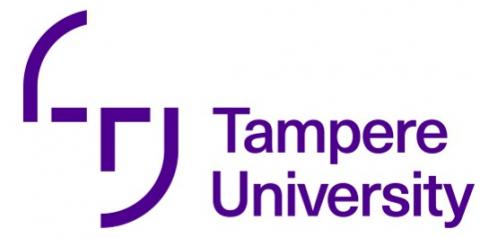COCOP: Surface Quality in Steel bars a route from the liquid Steel to the industry 4.0
By Asier Arteaga from SIDENOR (https://www.sidenor.com/es/
The steel is a mature material, it is produced in several forms and compositions optimized for products ranging from very thin flat sheets to big casted steel pieces. Each of the products has its own requirements and difficulties. There are requirements about chemical composition, mechanical properties, internal quality and surface quality among others. Concretely, surface quality refers to the absence of cracks in the surface.
The steel product covered in the COCOP project is the round bar of special steel (long product). This type of product is destined to a great extent for automotive industry in the elaboration of several pieces that will need a long product route combining hot forging, cutting, machining, superficial treatments and heat treatments.

Fig 1. Round bar of special steel
Nowadays, surface quality demands are becoming increasingly tight. Small cracks that were not a problem some years ago are not accepted any more. Cracks of 0.3 mm in bars of 80 mm are barely visible but are detected by well stablished measuring techniques as eddy currents.
And even if detection of those problems works, the elimination is a difficult task as several different processes are involved that radically transform the raw material into the final bar. Those processes (Fig 2) are not continuous either, as intermediate products are stored during weeks waiting for their next process. The transformation of the material is huge, starting from scrap, which is melted and processed as liquid steel at 1600 ºC in the secondary metallurgy; then, during continuous casting process, it is solidified in a form of a square big bat, called billet, and waits until it is required by the rolling mill to be heated again and transformed to a round bar that can range from 30 mm to 100 mm diameter. This bar can undergo heat treatments to get desired properties and will be definitively straightened and quality checked in the finishing unit.
 Fig 2. Steel making process Steps
Fig 2. Steel making process Steps
In this contest, the plant wide monitoring and optimization defined in COCOP project is a valuable tool. The holistic perspective allows the combination of different predictive models to detect possible conditions that can produce problems in any step of the long way from scrap to bar.
A further development well in the Industry 4.0 contest is to be able to track all the significant parameters that happened to the small portion of material having a crack during the different processes involved in its production. This advanced tracking, opposed to the traditional tracking of big lots (heats), was considered science fiction 20 years ago due to the several transformations of the material, heating and cuts too; but is getting closer and closer to make the next big jump in the surface quality problem analysis combined with the tools developed in COCOP work.
Follow the discussion in the COCOP Debate Group of Linkedin















